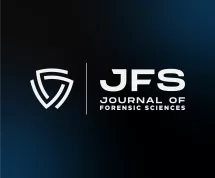Search
Explore content from JFS, ASB, the AAFS Newsfeed, and other content using the search bar or filters.
Equal Access to Digital Forensics Expertise
Prevalence of xylazine in overdose cases: An analysis of Miami‐Dade County medical...
Xylazine sedative, muscle relaxant, and analgesic used in a veterinary setting. Although xylazine was never approved for therapeutic use in humans, it has become popular in the street drug market as a cutting or bulking agent in the fentanyl and heroin supply. Recently, there has...
After Nurse’s Murder Conviction: A Reckoning
Announcing a New Forensic Nursing Science Video
Classical stimulants in Dallas County: A retrospective review of toxicological, seized...
Cocaine and methamphetamine remain highly abused drugs in the United States due to their euphoric effects. This study examines classical stimulant casework, defined as cases positive for methamphetamine and/or cocaine, received by the Toxicology Laboratory and the Drug Analysis L...
Internal validation of reduced PCR reaction volume of the Qiagen Investigator® Argus X‐12...
The onus of proof in criminal cases is beyond any reasonable doubt, and the issue on the lack of complete internal validation data can be manipulated when it comes to justifying the validity and reliability of the X‐chromosomal short tandem repeats analysis for court representati...
Assessment of carbon, oxygen, strontium, and lead isotopic variation in modern Colombian...
Colombia faces the complex humanitarian challenges of locating approximately 100,000 missing persons and identifying thousands who are deceased. Identification is a difficult task in many cases, because the skeletonized bodies are deteriorated, missing person data are unavailable...
The effects of certain intermediary target materials and their proximity to ballistic...
Expanding bullets are preferred by law enforcement because of their wounding potential and ability to avoid over‐penetration which could result in unintended targets being struck by bullets that perforate their intended targets. Expansion failure for jacketed hollow point (JHP) b...

2023 FSF IAFS Scholarship Recipient Announced
Postmortem genetic testing in sudden unexplained death: A public health laboratory...
Sudden unexplained death in the young poses a diagnostically challenging situation for practicing autopsy pathologists, especially in the absence of anatomic and toxicological findings. Postmortem genetic testing may identify pathogenic variants in the deceased of such cases, inc...
Author's response
Commentary on: Morgon J. Wrongful convictions and claims of false or misleading forensic...
Rapid and non‐destructive approach for characterization and differentiation of sealing wax...
Sealing wax is used for maintaining the integrity and authenticity of a document or physical evidence. Any tampering with the seal calls into question the overall integrity and authenticity of the tangible evidence or document. In these circumstances, determining the authenticity...
Knowledge of child abuse and neglect in nursing students: Assessment and perspectives
Misdiagnosis of child abuse and neglect can delay early treatment. Some authors have pointed out that nurses can miss child abuse and neglect diagnoses due to a lack of knowledge. It is unclear whether the lack of knowledge is due to students' insufficient preparation in nur...
Purdue University Hosting Cold Case Symposium October 2023
Family Closure Through Forensic Odontology
Closing Time! Submit Your Nominations for the Carrie Morgan Whitcomb Outstanding Service...
Rapid detection of synthetic cannabinoid receptor agonists impregnated into paper by...
The last few years have witnessed the change in the modalities of smuggling of synthetic cannabinoid receptor agonists (SCRAs) by impregnating them in mail envelopes and fast parcels. Considering the aforementioned scenario, it is important to develop a portable technique to iden...